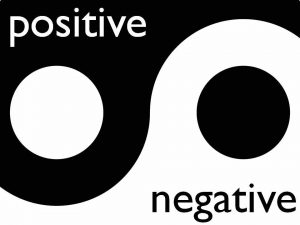
Evidence from over 350 randomised controlled trials (RCTs) indicates that a broad variety of psychotherapeutic interventions effectively reduce depressive symptoms (Cuijpers, van Straten, Andersson, & van Oppen, 2008).
Additionally, research suggests that affect can be divided into two separate dimensions: positive affect (PA) and negative affect (NA) (Watson & Tellegan, 1985). Furthermore, studies indicate that decreased PA is associated with sadness, lack of energy, inattententiveness, and lack of interest; key indicators of depression (Clark & Watson, 1991). Conversely, greater PA may operate as a source of resilience in buffering stress levels, therefore providing a protective factor against depressive symptoms (Steptoe & Wardle, 2005).
In support of this, a 2012 study by Hofmann presented a trans-diagnostic model suggesting that mood (and anxiety) disorders are a result of dysregulated NA and decreased PA. However to date, there has been no systematic review on the impact of these psychotherapeutic interventions on negative and positive affect dimensions in depression.
The present study by Boumparis, Karyotaki, Kleiboer, Hofmann, & Cuijpers (2016) aimed to rectify this gap in the literature by examining the effect of psychotherapy on negative affect (NA) and positive affect (PA) in adults with depression. The authors anticipated that psychotherapy would be significantly associated with a decrease in NA and an increase in PA. In support of Hofmann’s 2012 findings, the authors also anticipated that changes in depression would be primarily associated with an increase in PA.

Positive affect refers to positive moods such as joy, interest and alertness. Negative affect refers to unpleasant feelings or emotions such as sadness, fear and anger.
Methods
A systematic review incorporating all randomised controlled trials (RCTs) of psychotherapeutic-based interventions for adults with depression was conducted, using an existing database which was developed and updated utilising a systematic literature search of the Cochrane Central Register of Controlled Trials, PubMed, PsycINFO, and EMBASE, from 1996 to December 31st, 2014. An additional systematic search for studies published from January 1st, 2015 to December 31st, 2015 was also conducted.
Inclusion criteria
- Randomised Controlled Trials (RCTs) comparing psychotherapeutic interventions with waiting lists, psycho-education, or placebos
- Participants must be adults with depression based on a clinical interview or validated self-report scale
- All studies must include the measurement of participants’ PA and NA levels at baseline and post-intervention as assessed via a validated self-report scale.
Quality assessment
The validity of the included studies was assessed according to the criteria of the Cochrane Risk of Bias Assessment Tool, which includes an assessment of the following:
- Participant randomisation sequence (treatment versus control)
- Adequate concealment of treatment allocation
- Blinding of participants and personnel to treatment conditions
- Blinding of outcome assessors to participant treatment allocation
- Handling of incomplete outcome data
- Selective outcome reporting.

This study reviewed all of the high quality trials that explore the impact that psychotherapy has on negative and positive affect in adults with depression.
Results
From 18,114 abstracts (12,364 after duplicate removal), 1,769 full-text papers were selected for possible inclusion. A further 1,759 were excluded as they did not meet the inclusion criteria, resulting in 10 RCTs reporting on PA and NA outcomes for adults with depression. A total of 793 participants were included (386 treatment condition and 407 control condition) of which 76% were female.
Effect sizes were calculated from the variation in pre- and post- PA and NA outcome scores, and standardised using change scores. The program Comprehensive Meta-Analysis (CMA: version 2.2.021) was used to calculate pooled mean effect sizes. A random effects model was used to account for heterogeneity across the included studies as this statistical model assumes that the included studies were drawn from populations of studies systematically different from each other.
Effect of psychotherapeutic interventions on positive affect
- Psychotherapeutic interventions resulted in significantly increased PA (g = 0.41; 95% CI: 0.16 to 0.66, p = 0.001)
- The I-square test indicated substantial heterogeneity amongst included studies (I2 = 59; 95% CI: 16 to 79, p = 0.010).
Effect of psychotherapeutic interventions on negative affect
- Psychotherapeutic interventions resulted in significantly decreased NA (g = 0.32; 95% CI: 0.15 to 0.78, p = 0.001).
- After the exclusion of one outlying study, the I-square test indicated low heterogeneity amongst included studies (I2 = 0; 95% CI: 0 to 65, p = 0.484).
Depressive symptoms
- Psychotherapeutic interventions resulted in significantly decreased depressive symptoms (g = 0.38; 95% CI: 0.14 to 0.62, p = 0.002)
- The I-square test indicated moderate heterogeneity amongst included studies (I2 = 47; 95% CI: 0 to 75, p = 0.056).
Subgroup and sensitivity analysis
- Subgroup analysis demonstrated no significant differences between study characteristics and effect sizes for PA and NA outcomes
- To conduct a sensitivity analysis, studies which applied non-conventional psychotherapeutic treatments were removed (to aid comparability between conventional major types of psychotherapeutic interventions) resulting in a decreased effect size for PA (g = 0.37, p = 0.007) and significantly decreased effect size for NA (g = 0.29, p = 0.01).
Association of depressive symptoms with PA and NA
- The small number and heterogeneity of the included studies meant the meta-regression analysis produced conflicting results and consequently, the authors were unable to effectively demonstrate any relationship between depressive symptoms with PA and NA.

Findings demonstrated low-to-moderate effects for psychotherapies in enhancing positive affect and decreasing negative affect in adults with depression.
Conclusions
Consistent with the authors’ hypotheses, psychotherapeutic interventions increased PA and decreased NA in depressed adults (small-to-moderate effect). However, conflicting results from the meta-regression analyses rendered the authors unable to demonstrate sufficient evidence as to whether or not depressive symptoms, and PA and NA are associated with each other.
The authors summarise that:
PA and NA levels might be significant factors moderating the efficacy of psychotherapeutic interventions for depressive symptoms and should be assessed in clinical settings as secondary variables besides depressive symptoms.
Strengths and limitations
The systematic review and meta-analysis were carried out to a high standard according to best practice. Unfortunately, perhaps due to the heterogeneity in methodological practices across the included studies, the authors were unable to statistically determine whether an association exists between depressive symptoms with PA and NA. This is a major limitation of the study as one of the main objectives was to determine the impact of psychotherapeutic interventions on these affective dimensions in relation to depression.
The authors acknowledge the potential methodological issues of their study including the varying quality and variety of included psychotherapeutic interventions (e.g., the type of intervention, clinical or community setting, format of therapy, different outcome measures, and varying definitions of depression). And in order to account for the considerable heterogeneity across studies, the authors used a random effects model when calculating mean effect sizes. Another strength worth noting is that in an attempt to ensure no relevant study was missing, the authors conducted additional searches by checking the references of the included studies.
The inclusion of a broad range of conventional treatments for depression is another strength of the Boumparis et al. (2016) study as the variety of treatment modalities analysed reflects the widely accepted intervention means amongst mental health professionals in the greater community. Nonetheless, it is also a major limitation as the evidence base for these interventions varies greatly. Building on from Hofmann’s (2012) work, it may be more informative for future research to compare PA and NA outcomes arising from the gold standard treatment for depression; cognitive-behavioural therapy (Carter, 2010), to that of other evidence-based treatment modalities (e.g., interpersonal therapy) and a control group, to identify the greatest relative benefit.
Additionally, understanding how a treatment works involves identifying the mechanisms of change, the specific processes by which the treatment produces outcomes. Future research should therefore also aim to investigate the potential mediators of affective treatment outcomes. For example, it may be that the therapeutic alliance (common to all psychotherapeutic modalities) statistically accounts for the treatment-outcome relationship, or alternatively addressing negative cognitions (often a candidate for treating internalising disorders in RCTs) impacts upon PA and NA domains differently.

Given the small number and heterogeneity of the included studies (treatment modalities and evidence-base) the findings should be considered with caution.
Summary
The findings of Boumparis et al. (2016) systematic review and meta-analysis indicate low-to-moderate effects for psychotherapeutic interventions in enhancing PA and decreasing NA in adults with depression. However, given the small number and the heterogeneity of the included studies the findings should be considered with caution. The authors conclude the study by suggesting that future work should examine the impact of pharmacotherapy-only (often a sole treatment modality for many adults with depression) has on PA to determine whether the increase relapse rate is related to unaddressed PA.
Links
Primary paper
Boumparis N, Karyotaki E, Kleiboer A, Hofmann SG, Cuijpers P. (2016) The effect of psychotherapeutic interventions on positive and negative affect in depression: A systematic review and meta-analysis. Journal of Affective Disorders, Volume 202, 15 September 2016, Pages 153-162, ISSN 0165-0327 http://dx.doi.org/10.1016/j.jad.2016.05.019
Other references
Carter JD, Crowe M, Luty S, Mcintosh VV, Jordan J, Joyce P. (2010) Patient psychotherapy process in CBT and IPT for depression. Journal of Affective Disorders, 122, S42. doi.org/10.1016/j.jad.2010.02.028
Clark LA, Watson D. (1991) Tripartite model of anxiety and depression: Psychometric evidence and taxonomic implications. J. Abnorm. Psychol, 100, pp. 316–336. Retrieved from http://www.ncbi.nlm.nih.gov/pubmed/1918611
Cuijpers P, van Straten A, Andersson G, van Oppen P. (2008) Psychotherapy for depression in adults: A meta-analysis of comparative outcome studies. J. Consult. Clin. Psychol, 76, pp. 909–922 [PubMed Abstract]
Hofmann SG, Sawyer AT, Fang A, Asnaani A. (2012) Emotion dysregulation model of mood and anxiety disorders (PDF). Depression and Anxiety, 29(5), 409-416.
Steptoe A, Wardle J. (2005) Positive affect and biological function in everyday life. Neurobiol. Aging, 26, pp. 108–112. [PubMed Abstract]
Watson D, Tellegen A. (1985) Toward a consensual structure of mood. Psychol. Bull., 98, pp. 219–235. [APA PsychNet Abstract]
World Health Organization. (2012, October). Depression fact sheet. Retrieved from http://www.who.int/mediacentre/factsheets/fs369/en/

#Psychotherapy for #depression: positive and negative affect https://t.co/6psWn9rLwn
Psychotherapy for depression: enhancing positive and reducing negative affect? https://t.co/HSqN3tLoDt #MentalHealth https://t.co/LwH3ZMU1pK
Today @Carla_McEnery explores impact psychotherapy has on negative affect & positive affect in depression https://t.co/50OZSUiyua
Psychotherapy for depression: enhancing positive and reducing negative affect? https://t.co/Kkwxu5mJVa via @theoldreader
Psychotherapy for depression: enhancing positive and reducing negative affect? @Mental_Elf looks at the evidence https://t.co/sSFoaU4elc
Hi @pimcuijpers @KaryotakiEirini
We’ve blogged about your SR on +ive & -ive affect
https://t.co/50OZSUiyua https://t.co/8UinI7Vhrp
@Mental_Elf @pimcuijpers @KaryotakiEirini Significant up regulation of PA and down regulation of NA by 1 agent is ideal. #Psychoharmacology
SR finds low-to-moderate effects for psychotherapies ⬆️ positive affect & ⬇️ negative affect in depression https://t.co/50OZSUiyua
@Mental_Elf @LearningDisElf check SR for CBT in autism by @p_langdon et al
The effect of psychotherapies on positive & negative affect in depression
We blog about a recent systematic review
https://t.co/50OZSUiyua
Don’t miss
Psychotherapy for depression
Enhancing positive affect?
Reducing negative affect?
https://t.co/50OZSUiyua https://t.co/ouIn5bMI7s
Psychotherapy for depression: enhancing positive and reducing negative affect? https://t.co/ZmFAhRFdHO
Be Prepared. Caution and confused emotions will be placed in the ‘therapeutic hand’ After the Dr will go home to their lives and Patient-You will have Pain & Hurt. Feel betrayed!Another No?= I felt misused/anxious and wonder if it’s an ego booster for the proffs. to feel they really helped. That Horrible Painful Appointment. Paper never refuses INK!! :(